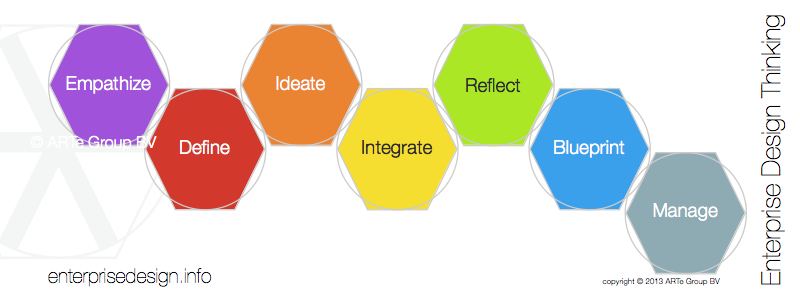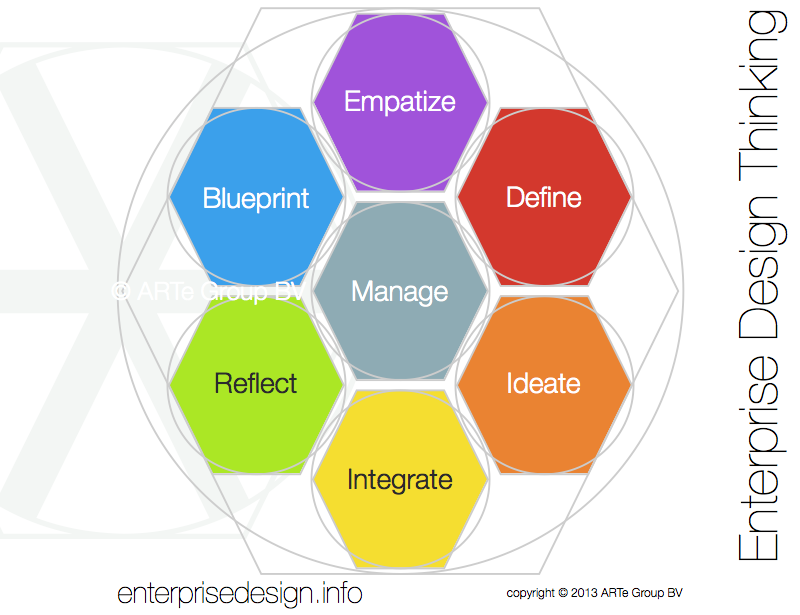Enterprise Design Thinking – part 2
A second blog post about Enterprise Design Thinking is to explain its iterative nature. As stated in our previous post businesses are both organic and organized therefore Enterprise Design Thinking should be both a mind-set and a process to deliver a specific service or product to a (business) stakeholder.
“A discipline that uses the designer’s sensibility and methods to match people’s needs with what is technologically feasible, and with what a viable business strategy can convert into customer value and market opportunity.” – Tim Brown, CEO of IDEO
Adapting design thinking and systems thinking resulting into Enterprise Design Thinking forces us to elaborate on the design thinking method with additional steps and approaches.
The common method of design thinking includes 5 steps: empathize, define, ideate, prototype and test. A common systems thinking application like within enterprise architecture development processes come down to: Plan, Identify, Create, Blueprint and Manage (implement and improve).

Combining both design thinking and systems thinking steps in an Enterprise Design Thinking process leads to: Empathize, Define, Ideate, Integrate, Reflect, Blueprint and Manage.
Empathize: The first step all about understands the context of the business change. This differs from operational challenges up to business strategy and down to existing business and information technology architectures.
Define: The second step aims to capture the context of the business change. A business change should be value focused, strategy driven and process oriented. Which highlights the need to have insight concerning stakeholders, motivation, customer / user expectations, requirements, risks, organizational structures, reporting, etc.
Ideate: The critical step of Enterprise Design Thinking. Using brainstorming, visualization techniques (e.g. Enterprise Design Canvas) to release creativity by generating out-of-the-box ideas to innovate or improve current ways of realizing the value proposition. It is about wishful thinkers, dreamers and engineers reaching to impossible and possible ideas.
Integrate: This middle step is by nature systems thinking. Besides creating a mock-up or sketches of ideas it is about the interoperability of the different aspects of business and information technology disciplines i.e. value, business, information, process, application, data and technology architecture. It is about the holistic without losing creativity.
Reflect: The fifth step is about validating the sketches and initial models (e.g. business, service, information, process, application) with stakeholders of the business change. This could result in refinement of previous steps.
Blueprint: The sixth step is all about finalizing the Enterprise Design and getting a sufficient level of detail to deliver a blueprint (models, archetypes, patterns) to accommodate the implementation of the business change.
Manage: The final step of the Enterprise Design Thinking process consists of two areas. First it is all about managing the implementation of the blueprint into the organization, including safeguarding and coaching within projects.

Secondly it is about governing the iterative nature of Enterprise Design Thinking process to learn and improve the Enterprise Design both during the implementation and the business operations.
© ARTe Group BV 2013 – All rights reserved


